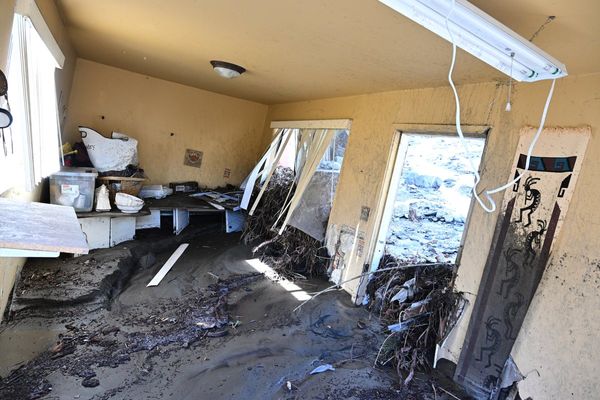
At first glance, dual-income-no-kids couples seem to have a clear advantage when it comes to retirement. With two steady paychecks and fewer day-to-day expenses, DINK retirement plans promise financial freedom earlier and with less stress. On paper, it’s a dream scenario: more disposable income, fewer responsibilities, and plenty of time to save. But in practice, many DINK couples discover that wealth without structure or discipline doesn’t always lead to the carefree retirement they imagined. Here’s why DINK retirement plans often stumble—and what couples can do to make sure their financial independence actually lasts.
1. Lifestyle Inflation Eats Away at Savings
One of the biggest pitfalls of DINK retirement plans is lifestyle inflation. Without children to consider, couples often find themselves spending more on travel, dining, and luxury upgrades instead of saving aggressively. While these experiences add joy in the present, they can quietly undermine long-term goals. The more income grows, the more expenses tend to follow, leaving little room for consistent investing. Over time, this can create the illusion of prosperity without the foundation of financial security that a retirement plan requires.
2. A Lack of Defined Financial Goals
Many DINK couples fall into the trap of “winging it” because they don’t have the same structured milestones—like college savings or family budgeting—that push parents to plan ahead. Without concrete targets, it’s easy to delay or underestimate how much they truly need for retirement. Even if they’re saving regularly, those funds may not align with future needs like healthcare or housing. Successful DINK retirement plans require the same intentionality as any family plan, just with different priorities. Setting clear timelines, dollar goals, and risk strategies keeps ambition from drifting into complacency.
3. Overconfidence in Dual Incomes
Two incomes may feel like a safety net, but relying too heavily on that dynamic can backfire. DINK retirement plans often assume that both partners will maintain steady, high-paying jobs indefinitely. But life rarely works that smoothly—job loss, health issues, or early burnout can suddenly reduce income streams. If one partner leaves the workforce or takes time off, the couple’s financial momentum can stall overnight. Building a plan that functions on one income ensures stability even when circumstances change unexpectedly.
4. Underestimating Future Healthcare Costs
With no children to think about, many DINK couples underestimate just how expensive medical care can be later in life. Employer-provided health coverage often ends at retirement, leaving retirees facing high premiums and unpredictable expenses. Long-term care is another major cost few DINK retirement plans factor in, yet it can easily consume savings meant for travel or leisure. Without dependents to assist with future care needs, couples must rely more heavily on professional services. Allocating funds for health coverage early can prevent financial strain in the years when medical costs inevitably rise.
5. Real Estate and Lifestyle Commitments Can Backfire
Many DINK couples upgrade their homes or invest in vacation properties under the assumption that their dual income makes it sustainable. While real estate can build equity, it also locks up liquidity and increases ongoing expenses like property taxes, maintenance, and insurance. These commitments can complicate retirement transitions, especially if the housing market cools at the wrong time. DINK retirement plans that focus too heavily on property over flexibility may find themselves “house rich but cash poor.” Prioritizing diversified investments helps maintain balance between comfort now and security later.
6. Neglecting Estate and Legacy Planning
Since DINK couples often don’t have children, estate planning can feel less urgent—but that assumption can create long-term complications. Without a clear will or beneficiary structure, assets may end up tied in probate or distributed according to state laws rather than personal wishes. Some couples assume their partner will automatically inherit everything, but that’s not always guaranteed. DINK retirement plans should include discussions about power of attorney, healthcare directives, and charitable giving to ensure assets are handled intentionally. Thinking through “what happens next” ensures peace of mind for both partners.
7. Misaligned Spending and Saving Habits Between Partners
Even with shared goals, couples often have different financial personalities. One may prioritize aggressive investing, while the other enjoys spending on experiences or comforts. Over time, these differences can lead to tension and inconsistent progress toward retirement goals. DINK retirement plans succeed only when both partners commit to a shared vision of what retirement looks like—and how to get there. Regular financial check-ins and transparent communication are essential for keeping goals aligned and habits consistent.
8. Underestimating the Emotional Side of Retirement
Many DINK couples envision retirement as an endless vacation, but the reality can feel surprisingly unstructured. Without children or grandchildren to fill time and purpose, some retirees struggle with boredom or loss of identity. This often leads to overspending on entertainment or spontaneous travel as a way to fill the void. Successful DINK retirement plans need more than just money—they require lifestyle planning that supports meaning and balance. Preparing emotionally for retirement can prevent impulsive financial decisions that drain savings too soon.
Turning DINK Potential into True Financial Independence
While DINK retirement plans come with unique challenges, they also offer unmatched opportunities. With disciplined saving, smart investing, and open communication, dual-income couples can transform their financial advantage into lifelong stability. The key is to recognize that “no kids” doesn’t mean “no responsibilities”—especially when it comes to future planning. By treating retirement like a shared project rather than a distant dream, couples can build wealth that supports both freedom and security. The goal isn’t just to retire early, but to retire prepared.
Are you part of a DINK couple working toward retirement? What financial habits have helped—or hurt—your progress so far? Share your experiences in the comments below!
What to Read Next…
10 Dream Destinations Where DINK Couples Retire Comfortably
8 Retirement Mistakes DINK Couples Still Make—Even With Two Incomes
Why DINK Couples Retire Earlier Than Everyone Else—And How They Do It
What Happens When DINK Couples Retire Together—But Have No Kids to Visit?
How Social Security and Required Minimum Distributions Impact Your Retirement Plan







